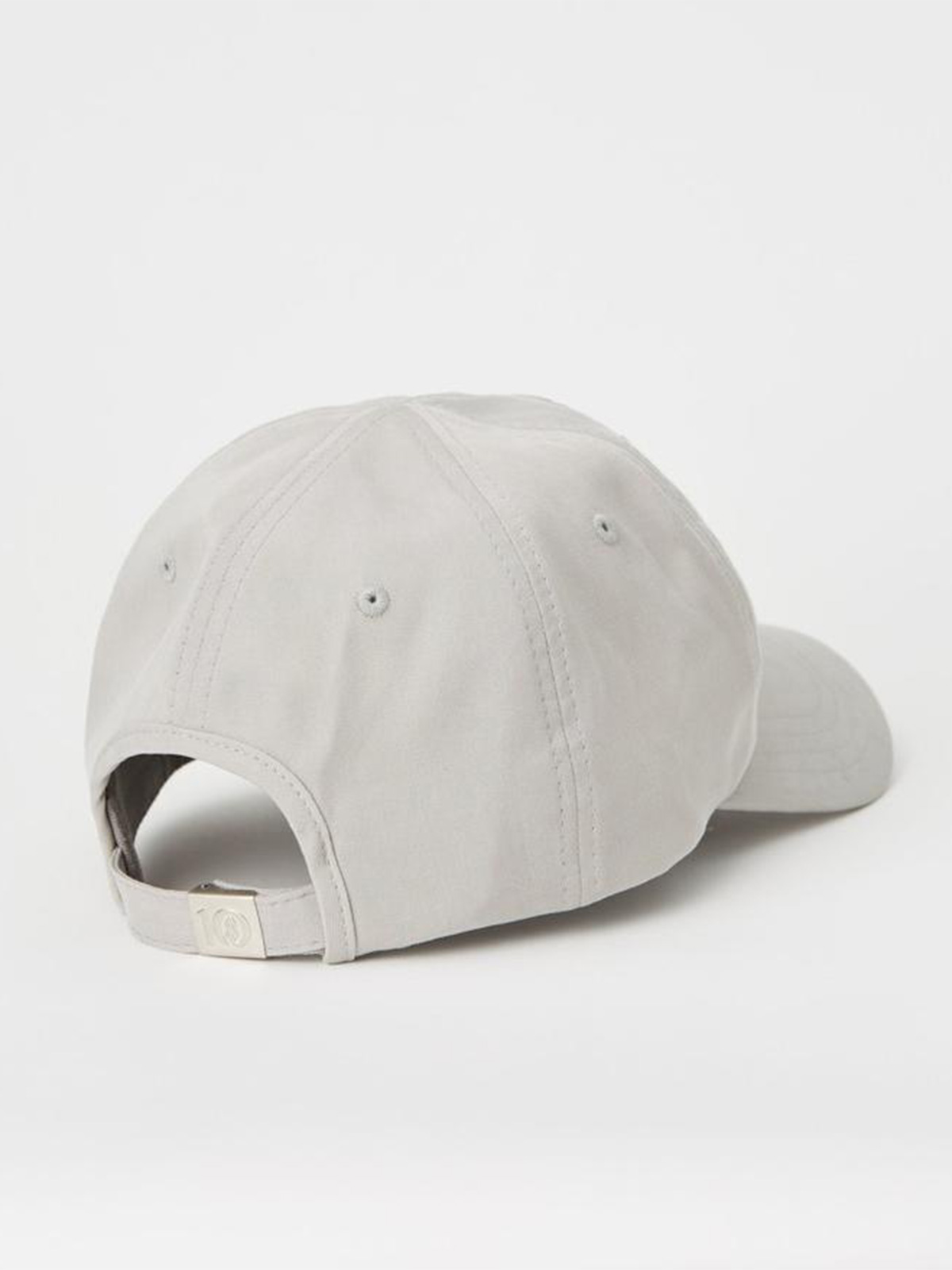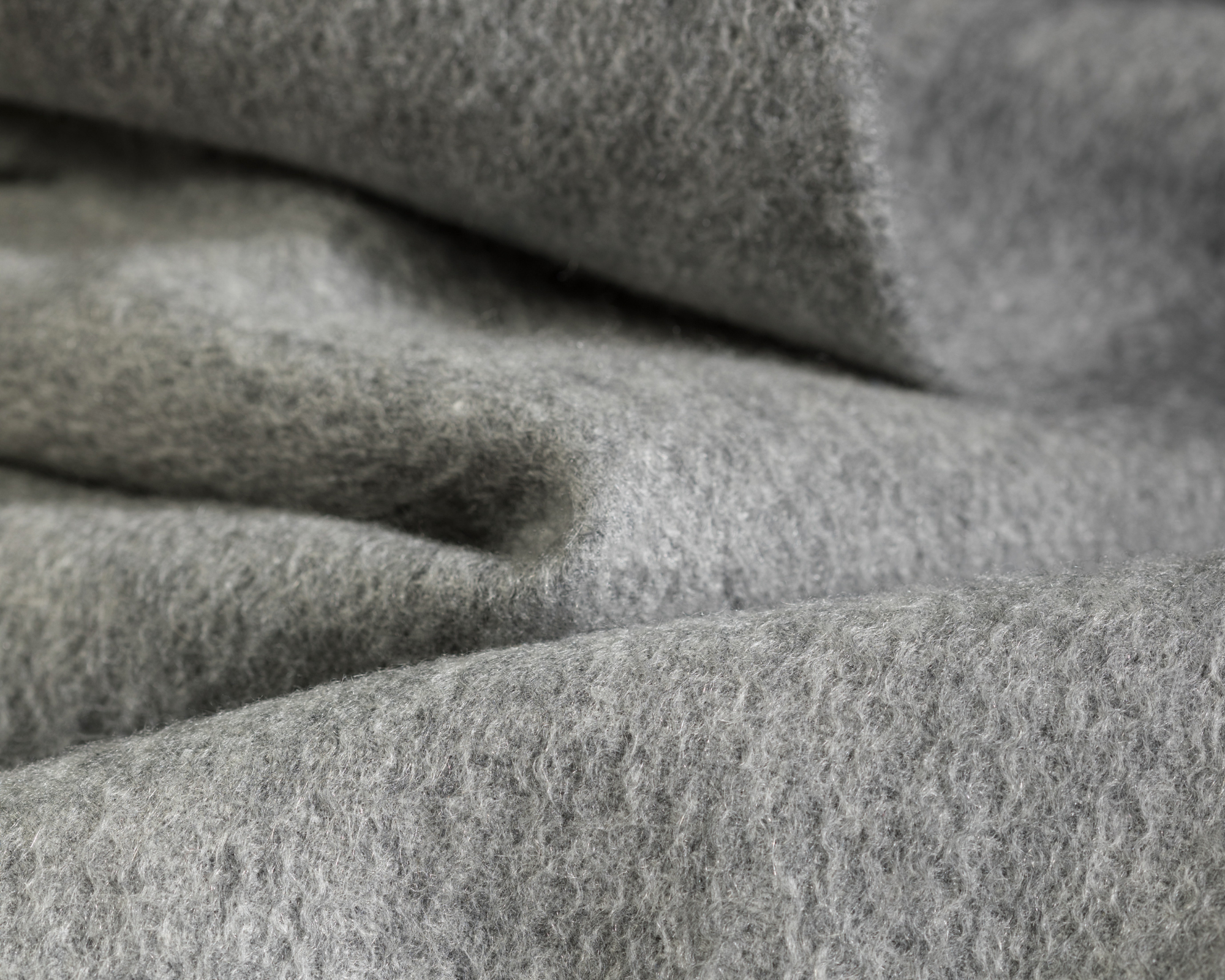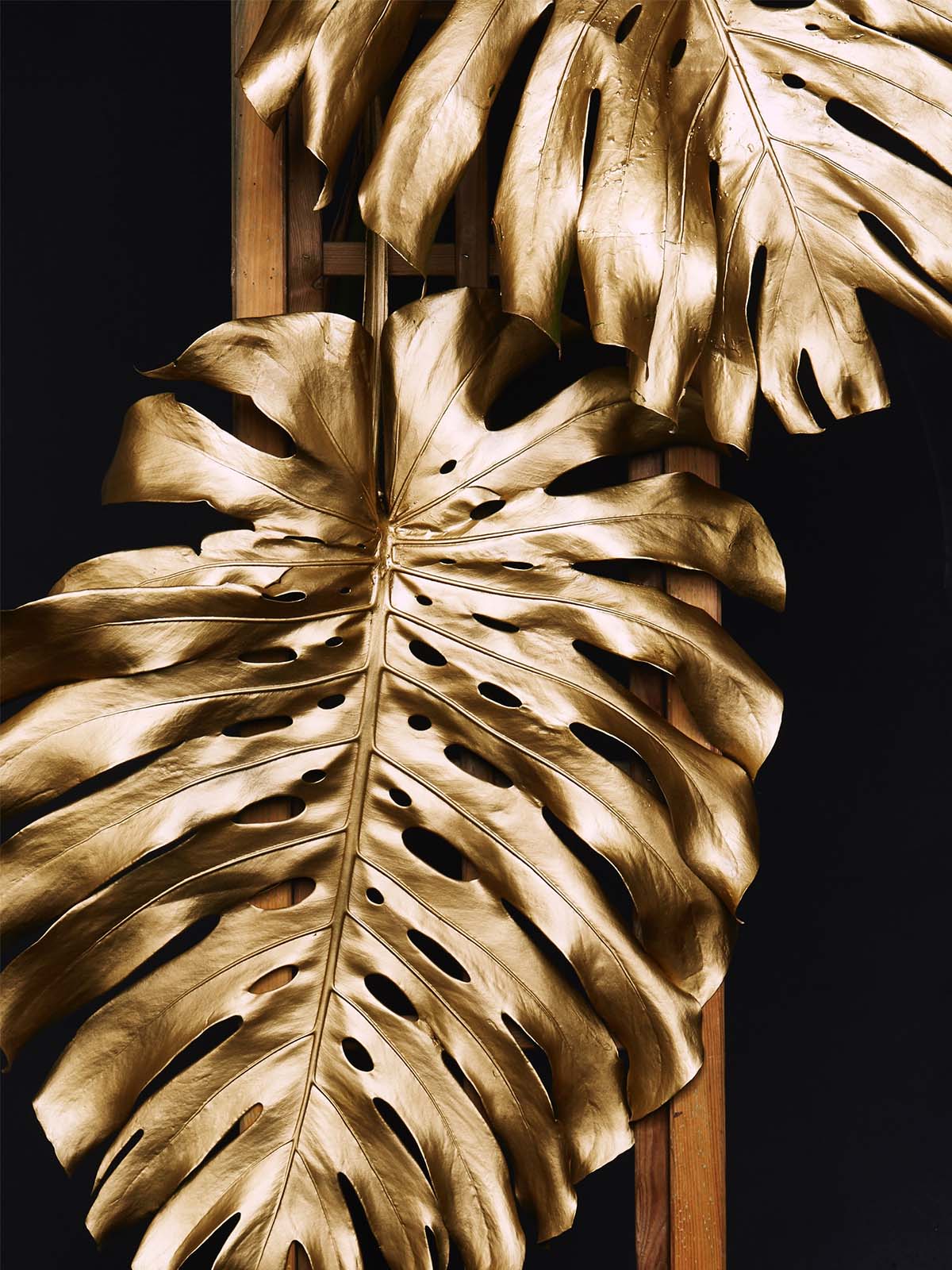From cashmere to silk, the sumptuous sheen, softness, and warmth of luxury fabrics may dazzle, but their production’s environmental and social toll often goes unseen. Here’s our guide to luxury fabrics.
How ethical and sustainable are luxury fabrics?
From cashmere to silk, luxurious fabrics have captivated us with their silky softness, stunning drapes, and enduring quality.
But the production of these materials can be far from the idyllic images they evoke. For example, the real cost of cashmere production is often felt by goats who, when sheared too early, can freeze to death, or by their herders who face low wages and poor working conditions.
As you become increasingly aware of the impact your fashion choices have on people, the planet, and animals, it is more important than ever to learn how these expensive fibres are made and whether you should invest in them.
How are these luxury fabrics made? And what is the true cost associated with the production of these materials? Let’s have a look.
Choose materials based on your values
We appreciate that materials and fibres in fashion is a complex issue. Through our research, we found there is no established hierarchy of sustainability for materials in the fashion industry, and very limited comparable data (eg Life Cycle Analysis). What is clear is that every single material on the market today has some sort of trade off and impact on the planet and a mixture of preferred materials is needed going forward.
At Good On You, we do our best to make sense of the complex materials world by independently analysing the information that is out there and consulting with industry experts. We recognise that the impacts of a given material can vary based on where and how it was produced. We also welcome all the innovation around novel materials. But as always, we are looking for solid science to assess them against all the main areas of environmental impact
Our list of lower-impact materials is not static and is constantly evolving as more research and data comes to light.
We believe that you are the final decision maker when choosing materials for yourself. Figure out what is most important to you and let information guide your process.
Of course, materials are not the only issue a brand should be addressing. For example, a brand using linen but not addressing greenhouse gas emissions in the supply chain, hazardous chemicals in dyeing, textile waste, or labour rights issues is far from best practice, but using more sustainable materials is a good base upon which to build a responsible brand.
To learn more about our process for ranking brands and materials, be sure to check out our How We Rate page
Silk
Silk is said to have been invented in China in the 4th century and is known for its strength, smoothness, and sheen. It is also known for its wrinkle resistance and ability to keep its shape.
Silk is spun from the long threads that make up a silkworm’s inner cocoon. The fibres are, in reality, saliva produced by the worm to insulate itself until it is time to transform. Silk is made by harvesting the raw silk threads and then reeling them together for commercial use. The silkworms are killed during the process of extracting the silk.
Alternatives to the silk-making process are possible. Ahimsa silk, also known as “peace silk”, allows the moth to evacuate the cocoon before being boiled. Some silks fall under the Ahimsa umbrella include “Eri silk” and “Tussar silk”. Unfortunately, peace silk isn’t very good for the environment.
When it comes to buying silk or its alternatives, check sources to ensure that you don’t buy into exploitation or environmental destruction.
Cashmere
Cashmere is one of the rarest and most luxurious fibres in the world. This exceptionally silky material is said to be three times as warm as wool and is known to be long-lasting. However, cashmere is less sustainable than you might think: the goats this fibre comes from being the first to pay the price of cheap cashmere production. As they have very little fat, shearing them too early mid-winter means they can freeze to death. Cashmere production can also have a social impact—there’s growing concern about the working conditions of cashmere goat herders.
The increased demand for cashmere has meant herd sizes have increased, driving the desertification of Mongolian grasslands. And climate change is exacerbating these impacts: the changes in temperature in Mongolia have meant poor quality cashmere, as goats need to be sheared in a narrow range of temperatures.
People used to pay a lot more for cashmere than they do today. This isn’t unique to cashmere, as the fast fashion industry continues to spew out all kinds of garments for lower market prices while the people, planet. and animals foot the true costs.
As more people (particularly those in the West) demand more cashmere knitwear, an industry that requires four goats to be combed for a single sweater has had to ramp up its pace. This has led to far lower welfare standards for goats and reduced payments to herders and industry workers, causing socio-economic struggles.
While goats are not killed to produce cashmere, they are treated as commodities in the industry, and they don’t get to live out their entire lifespan, as once their hair thins and brittles with age, they are slaughtered.
If you want to invest in cashmere, we’d recommend looking at second hand options first, then recycled cashmere.
Pashmina
Like cashmere, pashmina is a fibre derived from goats, but they are different in terms of the type of goat and the quality of the thread.
Pashmina comes from the fine, soft undercoat of the Changthangi goat, which is native to India’s high-altitude region of Ladakh. The fibre is finer and softer than cashmere, but it is also more delicate and prone to pilling.
Pashmina production encounters the same issues as that of cashmere. Climate change is also said to have a dramatic impact on Pashmina production and the goats’ nomadic shepherds, the Changpa people. Warmer winters reduce the quality and quantity of the valuable Pashmina wool, reducing the returns for herders and weavers, who have significantly reduced in numbers as a result.
What’s more, to meet the ever-increasing demand for Pashmina, producers have started importing raw Pashmina from China and Mongolia: “Although the goats are the same breed, they are not reared in the extreme conditions required to stimulate the growth of the super-soft undercoat required to be considered 100% pure Pashmina”, says Andrew Newey for CNN.
If you’d like to add a pashmina shawl to your wardrobe, have a look at your local thrift store or on vintage online marketplaces for some second hand options.
Mohair
Mohair is a luxurious, strong, and durable fabric that is made from the hair of the Angora goat, which lives in the mountainous regions of Turkey. Known for its softness, warmth, and durability, mohair is a popular choice for sweaters, coats, and scarves. Despite its delicate appearance, mohair fibres are surprisingly strong, resisting pilling and matting even after repeated wear and washing.
However, according to PETA, mohair production negatively impacts the environment: goats must be fed between 40 and 50 pounds of high-quality feed to produce one pound of mohair, which can lead to land degradation due to overstocking and overgrazing.
Like cashmere and pashmina, we recommend buying mohair second hand.
Merino wool
Merino wool is a fine, soft, and durable wool that comes from Merino sheep, a species found mainly in Australia and New Zealand. The fabric is prized for its warmth, breathability, and softness.
However, the impact of wool production, including Merino wool, on the planet and animals is significant. There is controversy over the practice of mulesing the sheep (cutting away skin to reduce flystrike, usually done without anaesthetic), and we recommend against purchasing wool from mulesed sheep for this reason. Keep in mind mulesing is one small aspect of sheep husbandry, and even mulesing-free wool can have other welfare concerns.
Industrial scale livestock grazing can also increase land clearing and degradation. Though more holistic land management methods for grazing livestock animals are gaining popularity and support, they aren’t yet widely practised. Wool that is “superwashed” (aka infused with plastic) or blended with synthetic fabrics also loses its biodegradability.
Wool certified by the Responsible Wool Standard, ZQ Merino Standard, or the Soil Association Organic Standards can be better options, bearing in mind that the animal welfare guarantees differ.
Vicuña
Vicuña is a delicate and lightweight type of wool that is taken from the vicuña, a member of the camel family, which lives in the high mountains of South America.
The fabric is known for its warmth, softness, durability, and lightness. It is also one of the most expensive and rarest of all wools, as vicuñas can only be sheared every three years.
Unfortunately, due to the rarity of the vicuña and the high demand for its lustrous wool, the animal is often over-hunted, and its habitat threatened as a result. We recommend steering clear of this fibre.
Alpaca wool
Another type of wool from South America, alpaca wool, is a luxurious, soft, and lightweight wool taken from the alpaca, a relative of the llama. Alpaca wool is also known to be hypoallergenic and prized for its warmth and breathability.
Some people consider alpaca wool a kind alternative to sheep’s wool, as it is often marketed as small-scale and sustainable in the industry. Unfortunately, an investigation into the leading production country of alpaca wool, Peru, has shown the opposite to be true. Following the release of footage showing alpacas suffering as they are tied down for shearing, even UNIQLO has banned the fibre.
Opt for second hand alpaca wool or go for an alternative.
Linen
Linen is one of the most biodegradable fabrics in fashion history. It’s strong, moth resistant, and made from flax plant fibres, so it’s fully biodegradable when untreated (ie not dyed).
Linen can withstand high temperatures and absorbs moisture without holding bacteria.
Linen is one of the better options on the market—just be sure to purchase garments in its naturally occurring shades of ivory, ecru, tan, and grey, and especially avoid bright white linen, which has to go through an intensive bleaching process.
Go for organic linen, one of our top ranked materials, to ensure no harmful chemicals were used in production.
Egyptian cotton
Egyptian cotton is made from Gossypium Barbadense, a plant that produces long-staple cotton and which is grown in the Nile Delta and other parts of Egypt. The fabric was invented in the 18th century and is prized for its ability to remain soft and wrinkle-resistant even after multiple washings.
Like cotton, Egyptian cotton is a naturally-occurring fibre, but claims of pollution, exploitation, and slavery nevertheless haunt its production. What’s more, while Egyptian cotton refers solely to cotton made from Gossypium Barbadense, Egyptian cotton is often incorrectly used as a marketing term to include any cotton grown in Egypt.
If you can, go for garments made with recycled or certified organic cotton instead.
Fur
Traditionally, fur was worn as a source of warmth and protection. For centuries, animals were killed for meat, with their pelts providing a practical and durable material that would keep people safe from the elements. In the 20th century, fur became a regular feature of luxury fashion when Hollywood stars appeared draped in exotic pelts. Since then, fur has been marketed as a measure of wealth and glamour—expensive and desirable.
As fur’s popularity grew, fur farming became big business. At the same time, the animals involved became commodified—opening the door to inhumane practices, like being skinned alive. For many of us, wearing fur is simply cruel and to be avoided at all costs. Campaign groups such as PETA have long highlighted the inhumane practices of fur farms. That isn’t to mention all the environmental and labour issues fur-farming has, many the same as leather.
An ethical consumer motivated by the interests of animals would avoid any new product made from fur. At Good On You, we take a zero-tolerance approach to brands that use fur or fur from other non-domesticated animals.
Velvet
The word “velvet” refers to the structure of the fabric, not the actual fibre or material used. You can recognise velvet thanks to its short pile, raised loops, and tufts of yarn that cover its surface.
Velvet can be woven from any type of yarn. While velvet was traditionally woven from silk in the past, cheaper materials, such as cotton, linen, wool, or synthetic fibres, are commonly used alone or in combination. The fashion industry, especially fast fashion retailers, mostly replaces silk or other plant-based materials with polyester.
If you want a velvet item in your wardrobe, we recommend shopping second hand, in order not to increase the use of new plastics or silk. Alternatively, look for velvet made from a modal rayon from more sustainably harvested beech trees and better processing methods.




















